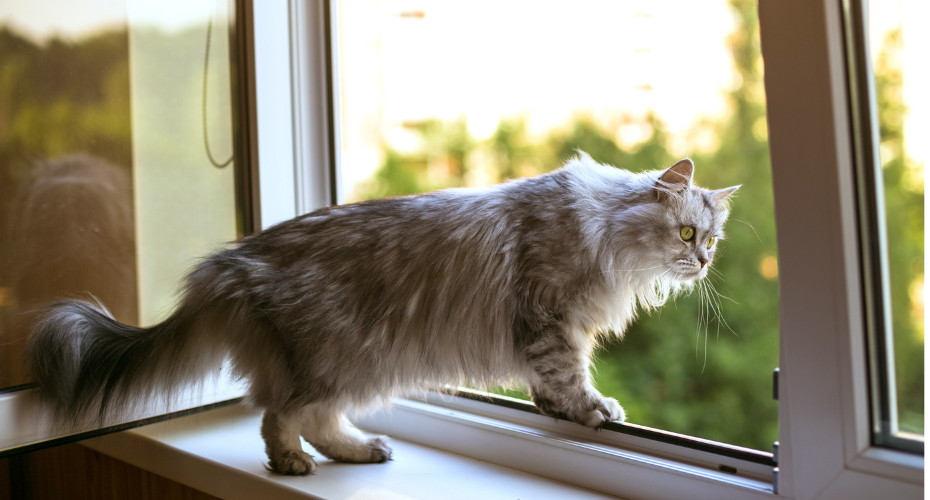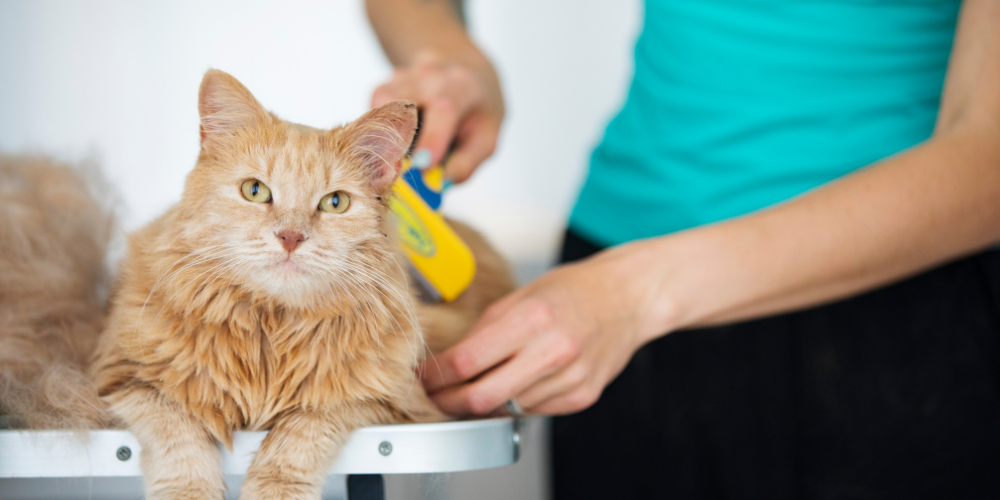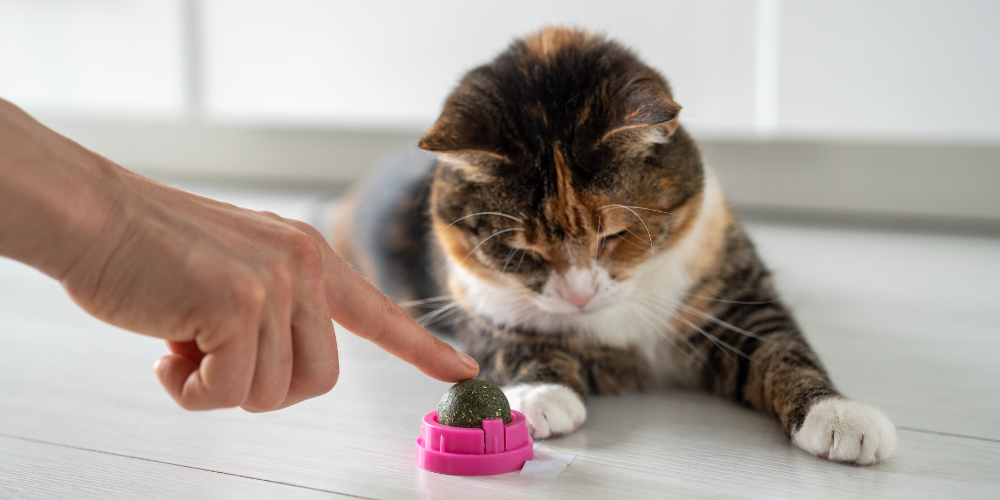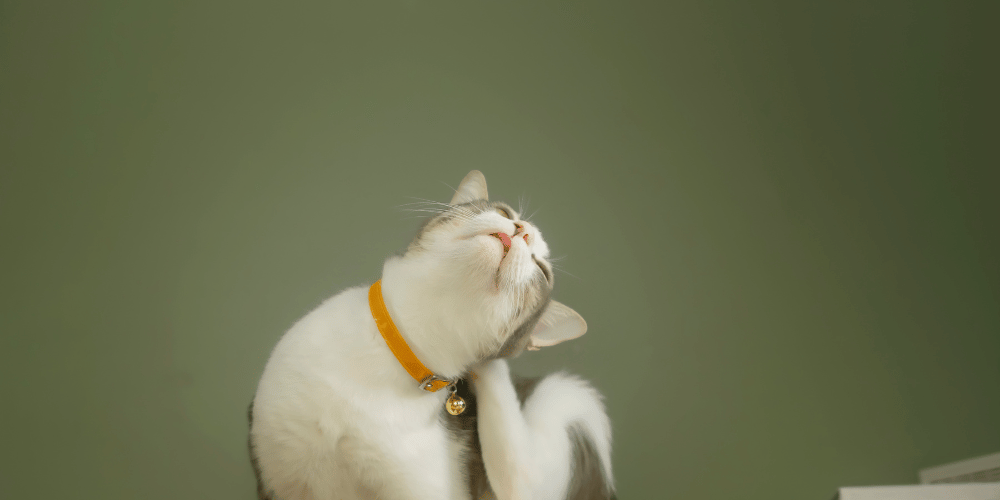
Take a moment to picture your cat shaking paws, weaving through an agility course and jumping through hoops, or maybe balancing treats on their nose. If your home is filled with shredded curtains now made of strings and furniture covered in fur, that image will probably make you laugh! Everyone has heard that you can't train a cat. A cats home belongs to the cat and you can’t do anything to help it, right? It turns out that you can help your cat’s behaviour, but you aren’t going to be able to do it by simply treating the cat as you would a dog.
The Lone Cat Home
The largest part of this journey is going to be understanding that cats are largely wired in a different way than dogs. A dog is a pack animal. They are hard wired to be social and their survival depends on this aspect of their personality when they are in the wild. A wild cat on the other hand, is a lone ranger who has evolved into taking care of themselves. They really don’t much about earning your approval or working to keep you happy. Ever wonder why your cat doesn’t listen when you tell it “no” or shake your finger at it? This is the reason why.
Don’t give up hope though! You can always teach your cat to be a better roommate. For a cat, their behaviour is decided by whatever is in their best interests. Your cat might ignore you all day long while you call it, but once you open up a can of cat food they are climbing up your leg to show you how much they love you. This same philosophy can be used to teach them good behaviour by showing them that good behaviour is what would be best for them. View our range of cat food from Vet Products Direct.
A Scratching Cat In An Apartment
Scratching has to be one of the most annoying cat behavioural problems. As frustrated as you may be after you find your brand new couch scratched to bits, but sharpening their claws is a very normal part of cat life. Scratching is how your cat marks its territory. Visitors are supposed to know that this is their kingdom. Chances are you’re not going to be able to stop the behaviour completely, but you can provide cat accessories like scratching posts that will move the habit to something made for that purpose.
Products like scratching posts are going to greatly help get the behaviour under control. Ideally you should be buying more than one and placing them next to some of their favourite places to mark their territory. Keep in mind also, that they are attempting to mark their property. You should be putting a post in an important place to make sure that they have something to mark that will be visible to visitors. You are then going to have to make them seem as appealing as possible. Rub them with a blanket that your cat sleeps on and put catnip on them to make them as inviting as possible.
Reward your cat whenever they use the scratching post. A treat will work well, however it will take some time for this positive reinforcement to work. While they are adjusting their behaviour, avoid yelling at your cat. All that is going to accomplish is to make them aggressive and fearful of you. The best thing to do is distract them by hissing, clapping, or making some other noise that doesn’t involve you yelling at them. You could also try to show them what to do afterwards by running your nails across the post.
Litter In A Cat Home
Another part of living with a cat in your home is litter box training. In nature, cats prefer to do their business in soft, sandy materials. A litter tray filled with a similar material is the next best thing for a cat living in an apartment and your cat will usually go to it on its own. If you find that your cat is going outside of their litter box then there may be an issue with the litter box that you are using or the type of litter. The first thing to rule out is a medical problem, as a urinary tract obstruction or infection could be to blame and your cat may be associating the pain of the infection with going in their tray. It is also possible that your cat simply doesn’t like the type of litter that you are using. On the whole cats prefer small-grained sand like litter over larger grained ones. Scented litters can also turn many cats away, although they are great for covering up particularly smelly cats. While that might be great for you, the cat might think otherwise.
Much like the scratching post, you are going to need to make absolutely sure that your cats litter box is as appealing as possible. Cats tend to be very clean animals, so cleaning their box as often as necessary is very important. There are cats that will want it cleaned twice daily or even more frequenty if you have multiple cats. If you do have a multi-cat household, the general rule of thumb for the number of litter trays is one for every cat you have, plus one more. For example, if you have two cats, ideally you should have three litter trays. Your cats litter tray should be placed in a quiet location away from their food and water bowls.
Don’t Be Scared By Love Bites
The strangest thing can happen sometimes; your cat will be purring away and cuddling with you when all of a sudden they bite down on your hand as you try to pet them. This sudden change in behaviour can occur when you cat becomes overstimulated. Conflicting emotions are often responsible for this sudden switch. Many cats both love and hate being touched. The side that wins this conflict changes from moment to moment. The only way to deter the biting is to avoid overstimulating your cat. Learn to read the signs when your cat is trying to tell you that they've had enough. If you aren't quick enough at stopping the patting and your cat goes for a bite, don't yell at them. Instead, calmy remove your hand and pay no attention to your cat. They will have to learn that biting isn't the way to get your attention.
Reigning From The Top
There is nothing a cat loves more than looking down upon everyone from a highpoint in your apartment. They love being up high as they like to be able to see everyone and everything all at once. The tops of bookshelves, mantles, counter tops, fridges and more are all favourite places for cats to perch. If you aren't a fan of having your cat on certain high points in your apartment such as your kitchen bench or near delicate items on a bookshelf, you have probably struggled to keep them from assuming their high throne.
Most cat trainers will recommend discouraging your cat from venturing up to these high places by spraying them with water or hissing at them. It can however be tricky to convince your cat that they are only being punished for accessing these off limit areas and not for any other action. Many cats will only keep off these restricted sections in your presence.
Therefore a better solution to this problem is something that deters them, whether you are present or not. Something like double-sided tape or aluminium foil. Cats can't stand the feeling of something stick on their paws and the movement and noise of the aluminium foil just creeps them out. This is a very quick way of teaching them to stay off these spaces. Ideally, in place of this high space, you should give your cat another high point that they can use. A cat tree or perch attached to a window is a great idea for this reason and you can use catnip or a favourite toy to show them that you are perfectly fine with them being in this new space.
While you might not be able to train your cat to jump through hoops or backflip across your lounge room, you will find your home is much more harmonious if you can at least teach your cat what not to do. Training your cat will take patience, but you will be rewarded with a happy house and contented feline. View the full range of cat supplies from VetProductsDirect.





